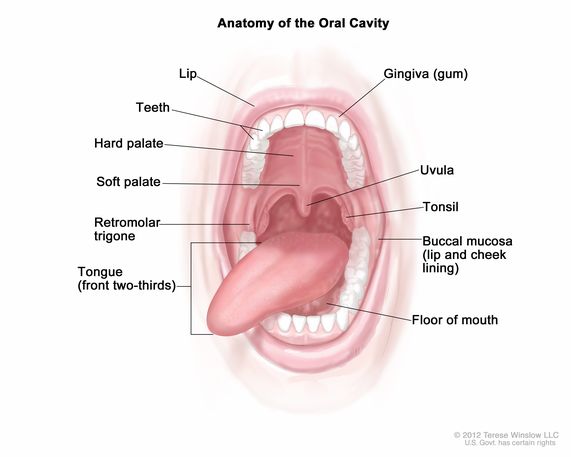oral epithelial dysplasia
(OR-ul eh-pih-THEE-lee-ul dis-PLAY-zhuh)
The presence of abnormal cells in the tissues of the mouth. These tissues include the lips, the lining of the inside of the cheeks, the gums, the front two thirds of the tongue, the bottom of the mouth under the tongue, the bony part of the roof of the mouth, and the small area behind the wisdom teeth. Oral epithelial dysplasia may be found in patches of tissue that look red, white, or a mixture of both colors but can only be diagnosed by looking at the cells under a microscope. It is most commonly caused by tobacco or alcohol use. It may also be caused by infection with certain types of human papillomavirus (HPV). Oral epithelial dysplasia is not cancer but may become cancer and spread to nearby normal tissue. It can be mild, moderate, or severe, depending on how abnormal the cells look under a microscope and how much of the tissues in the mouth are affected. Also called OED and oral dysplasia.
